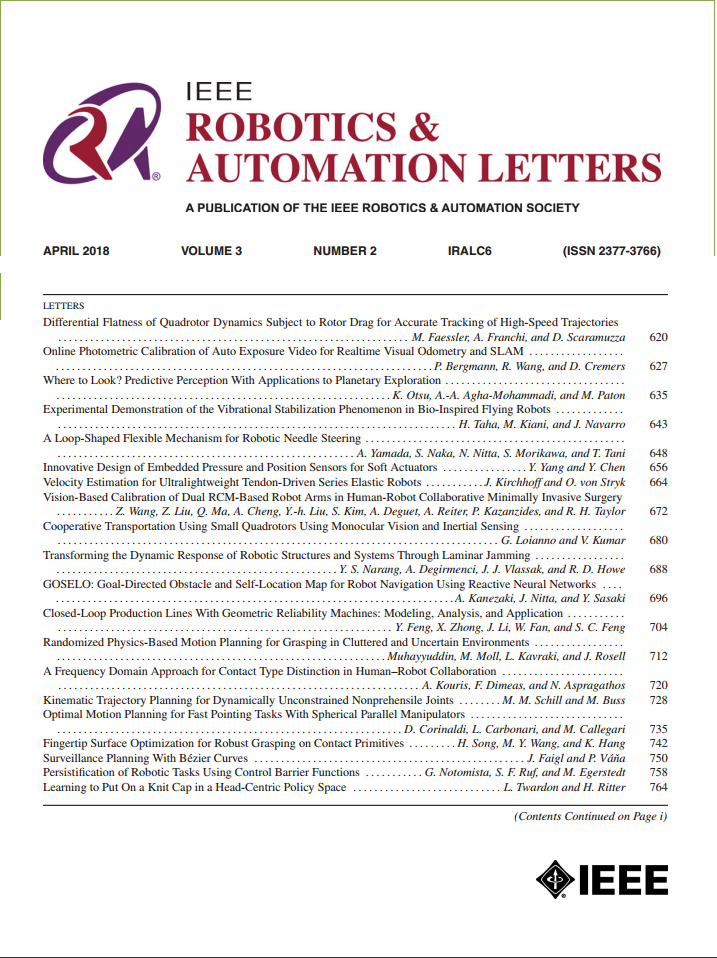A Predictor-Corrector Algorithm for the Fast Determination of the Wrench-Feasible Workspace of Cable-Driven Parallel Robots
IF 4.6
2区 计算机科学
Q2 ROBOTICS
引用次数: 0
Abstract
In this letter, we present a method of determining the Constant-Orientation Wrench-Feasible Workspace (COWFW) of Cable-Driven Parallel Robots (CDPRs). This workspace is a critical property of CDPRs, as their reach is often limited by their ability to sustain required forces and moments while keeping their cable tensions within acceptable limits. Several manners of determining the COWFW are reported in the literature, among which the brute force method is probably the most popular, the easiest to implement and the slowest, as it consists in determining wrench-feasibility at a grid of points covering the workspace. On the other hand, the ray-tracing method implemented in一种快速确定缆索驱动并联机器人扳手可行工作空间的预测校正算法
在这篇文章中,我们提出了一种确定缆索驱动并联机器人(CDPRs)恒定方向扳手可行工作空间(COWFW)的方法。该工作空间是cdpr的关键属性,因为它们的范围通常受到其承受所需力和力矩的能力的限制,同时将电缆张力保持在可接受的范围内。在文献中报道了几种确定COWFW的方法,其中蛮力方法可能是最流行的,最容易实现和最慢的,因为它包括确定在覆盖工作区的点网格上的扳手可行性。另一方面,在WireX软件中实现的光线追踪方法可能是最快的方法;它包括通过从一个共同的起点沿着预定的、均匀间隔的方向执行线搜索来对COWFW边界进行采样。这封信函中提出的方法是将计算机图形学中使用的预测校正算法应用于cdpr,以快速采样隐式曲面。在这项工作中,隐式曲面的定义是将“容量边际”(capacity margin)等同于零,这是作者之一开发的一个指标。然后,预测校正算法在隐式表面上“行进”,在前进时对其进行三角测量。仿真结果表明,至少在某些例子中,该方法比射线追踪法更快地确定COWFW表面,并且通常产生更规则的三角剖分。然而,我们应该注意到,这种方法的实现要求更高,它比光线追踪方法需要更多的代码行。
本文章由计算机程序翻译,如有差异,请以英文原文为准。
求助全文
约1分钟内获得全文
求助全文
来源期刊

IEEE Robotics and Automation Letters
Computer Science-Computer Science Applications
CiteScore
9.60
自引率
15.40%
发文量
1428
期刊介绍:
The scope of this journal is to publish peer-reviewed articles that provide a timely and concise account of innovative research ideas and application results, reporting significant theoretical findings and application case studies in areas of robotics and automation.
 求助内容:
求助内容: 应助结果提醒方式:
应助结果提醒方式:


